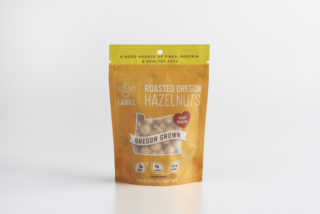Home > Farm > Crops & Livestock > Oregon Growers and Producers Are Betting Big on Growth of U.S. Hazelnut Industry
Oregon Growers and Producers Are Betting Big on Growth of U.S. Hazelnut Industry
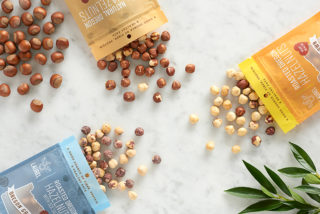
Step aside, almonds—there’s a new health nut in town. According to recent research, Americans are eating more hazelnuts: Nearly half of all consumers ate them at least once a month in 2017, compared with only 33% a decade ago. It makes sense, given the major shift toward eating more heart-healthy foods (such as nuts) in recent years. It’s also excellent news for farmers in Oregon, who produce the vast majority of U.S.-grown hazelnuts.
One major player in the Oregon hazelnut industry is Laurel Foods, a partnership of three families – the Denfelds, the Warings and the Johnsons – based in the lush Willamette Valley that was started in 2012 as Laurel Nut Company.
See more: How Oregon Olive Mill Beats the Odds Producing Quality Olive Oil
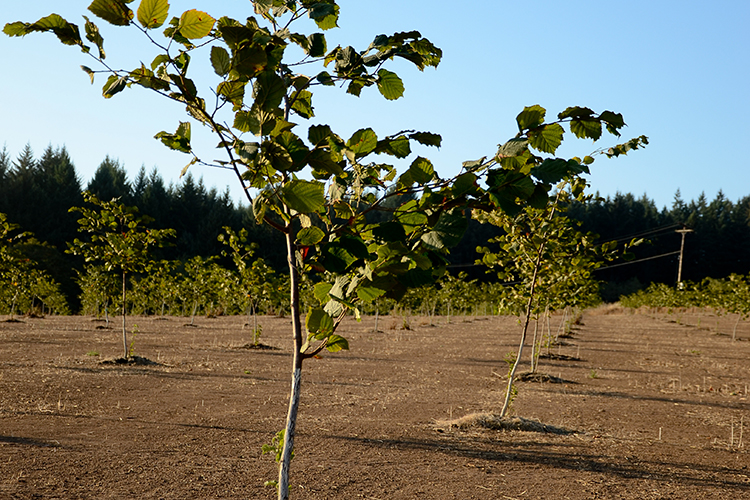
“It was originally an opportunity for growers to deliver to us and get paid over the course of the year based on how well we marketed for them,” says Troy Johnson, managing director.
The Oregon hazelnut industry typically has a cash price paid out at the beginning of the year, so Laurel Nut Company’s hybrid cash-cooperative model was an attractive one for growers. The following year, they began to acquire some processing equipment, so they brought on Mike Johnson, Troy’s brother, to manage operations and started working toward building a value-added food-processing company specializing in hazelnuts.

In 2014, the company was renamed Laurel Foods, and they set up a processing facility in Salem, Oregon. After several years of growth, they moved production to a new 28,000-square-foot facility on the Denfeld farm in 2017.
“We [now] have the capacity to roast [hazelnuts], make [hazelnut] butter and oil, produce protein powder, you name it,” says Johnson. “Anything we can do with hazelnuts, we’re focusing on that at the moment.”
See more: Nuts About Oregon Hazelnuts

Unique Methods of Hazelnut Farming
About 800 farm families in Oregon cultivate 99% of the U.S. hazelnut crop, according to Nut Growers Society of Oregon – and that’s mainly due to the unique climate of the region.
“There’s a pretty narrow band around the globe, in both the Northern and Southern hemispheres, [where hazelnuts can grow],” explains Sean Denfeld, whose family runs a sixth-generation hazelnut farming operation. “You need cool, temperate summers with not-too-extreme winters – and what’s great about Oregon is we have the coastal influence, so that keeps the winters mild.”
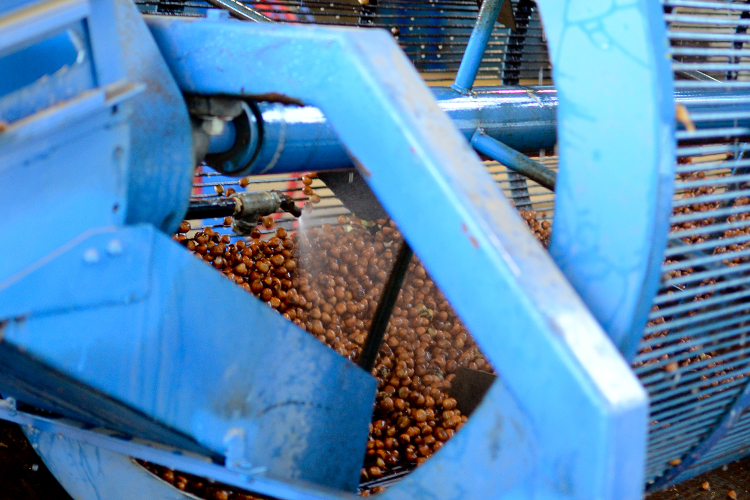
Harvesting hazelnuts in Oregon hasn’t changed for many generations, says Denfeld. While other hazelnut-producing regions in the world, such as Turkey and Italy, use a handpicking or vacuum technique, Oregon farmers let the nuts naturally fall. They sweep the nuts into a center aisle, then run a machine down the row to pick them up. Ideally, they make two or three passes throughout harvest, spanning the six- to eight-week window that begins in September when nuts begin to fall. Then, the nuts have to dry (to 10% moisture or less) before being processed.
“The quality is better if we let them drop naturally, and compared to other hazelnut-growing regions, it’s the most efficient method,” says Denfeld. “Our three-man crew can harvest 40 acres a day.”
See more: Why Oregon is Getting Into the Tea and Cider Industry
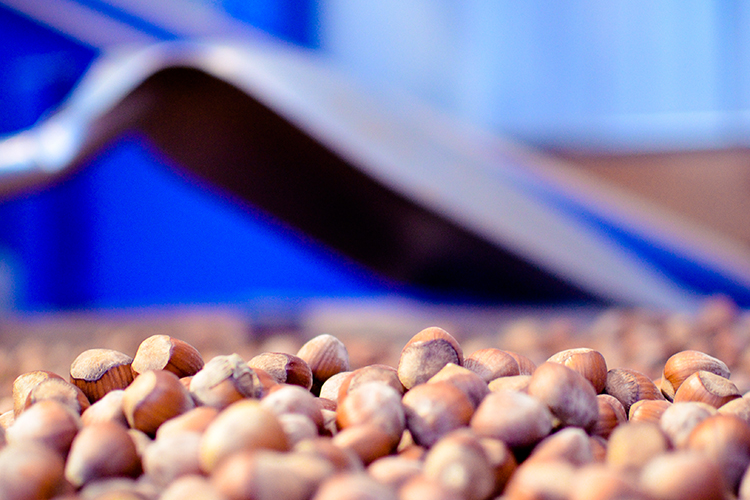
Denfeld farms about 750 acres of hazelnuts, alongside 250 acres of walnuts. One of the great things about hazelnuts is that they require minimal herbicides and pesticides, and since the trees tend to keep grass on the ground, farmers have minimal erosion issues.
“The big push right now is to tell the story that [hazelnut farming] is low impact and easy on the earth,” says Denfeld.
A Growing Hazelnut Market
In the past, Oregon hazelnuts have predominantly sold in the Chinese market because they can take the crop early, which fits with the model of being able to pay growers quickly, says Johnson. However, selling this way didn’t add long-term value to growers and didn’t allow for expansion in the U.S. market – so the model is evolving.
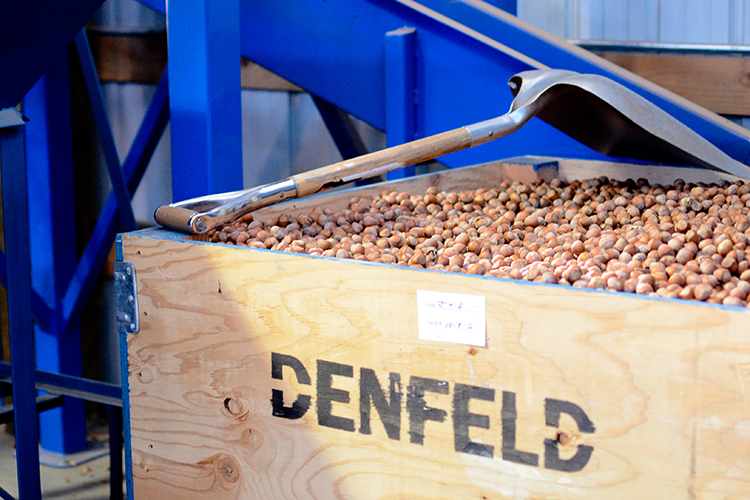
“The reason hazelnuts haven’t been more popular in the U.S. is our own fault – we’ve chosen other markets that were easy to get into,” says Johnson. With increased crops as of late, “we have enough nuts now to start showing them to the domestic industry,” he adds.
Mike Johnson is in charge of developing distribution channels for Laurel Foods, and says nearly 1,000 stores have expressed interest in their products, including natural, roasted and roasted sea-salt hazelnuts. A big reason for this is the health angle: Each 4-ounce package of hazelnuts promotes the nutrition benefits of the nut with a “heart healthy” badge and touts their high protein and fiber content (3 grams and 4 grams per serving, respectively), along with B and E vitamins.
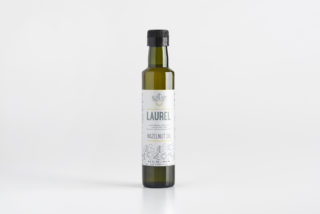
Expanding Hazelnut Products
Since Laurel Foods has experienced great response to its current hazelnut flavors, they’re looking to expand into other flavors like sea salt and vinegar in the coming months.
Yet hazelnuts in their purest nut form aren’t the only products catching on with consumers. Laurel Foods also produces hazelnut oil, an unrefined oil with a high smoke point that’s rich in monounsaturated (good) fats and low in saturated fat.
“Hazelnut oil tends to complement things, not overpower them,” says Johnson. “You can use it like you would an olive oil, as a marinade for barbecue, as a salad dressing, in place of butter on popcorn or even on top of ice cream.”

At the 2019 Sweets & Snacks Expo in May, Laurel Foods also debuted a roasted hazelnut butter. Not to be confused with Nutella (which contains palm oil, cocoa and additives), this product only has one ingredient – hazelnuts. It can be used just like a peanut or almond butter. While still a new product with consumers, it’s slowly starting to catch on, and Laurel Foods is expecting that hazelnuts will only continue to grow in popularity.
“Our industry, without a shadow of a doubt, will double in the next five years,” says Johnson. “We’re happy taking the lead of promoting Oregon hazelnuts all the way down to the consumer level, and we believe that will transcend into more products in several different segments.”
